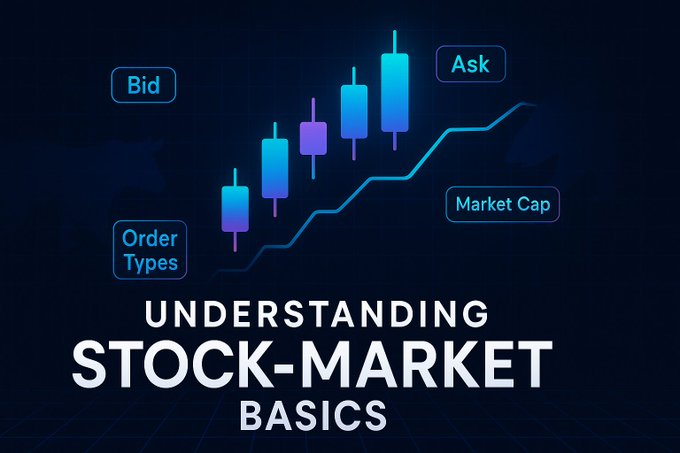Shopping Cart
Your cart is empty.
 Trader WorkStation
Trader WorkStation
Your cart is empty.

What is a stock
A stock is a slice of ownership in a company. Own a share and you own a tiny fraction of its assets and earnings. Stocks list on public exchanges so buyers and sellers can trade quickly and transparently.
Exchanges and brokers
In the U.S., the two big exchanges are the NYSE and Nasdaq. You don’t trade directly with the exchange—you place orders through a broker. Your broker routes your order to an exchange or another venue (a market maker or “dark pool”) to get it filled. The goal is best execution: a fair price and fast fill.
Ticker symbols
Every listed company has a ticker (AAPL, MSFT, TSLA). ETFs and ETNs use tickers too (SPY, QQQ, IWM). Keep tickers clean in watchlists; one wrong letter is a different product.
Bid, ask, and the spread
Bid is what buyers are offering. Ask is what sellers demand. The difference is the spread. Tight spreads mean liquid markets; wide spreads mean you pay a toll to get in or out.
Volume and liquidity
Volume is how many shares changed hands. Higher volume generally means better fills and less slippage. Low volume can trap you in a position when it counts.
Market cap
Shares outstanding × price. Large-caps (stable), mid-caps (balanced), small-caps (spicy). Market cap says nothing about value; it’s just company size.
Order types that actually matter
- Market: Fill me now at the best available price. Fast, but price may slip.
- Limit: Fill me at this price or better. Control, but you might not get filled.
- Stop (stop-market): Triggers a market order when price hits your stop level.
- Stop-limit: Triggers a limit order at your stop level. Avoids bad fills, but can fail to execute in fast moves.
- Time in force: DAY (expires at close), GTC (stays live), IOC/FOK (immediate or cancel / fill or kill).
Short selling in one paragraph
You borrow shares and sell them hoping to buy back lower. Losses can be unlimited if price rips higher. Respect borrow fees, hard-to-borrow status, and locate requirements.
Dividends and splits
Dividends are company cash paid to shareholders. Record date and ex-dividend date matter. Splits change share count and price, not value.
Trading sessions
- Pre-market (typically 4:00–9:30 ET): thin volume, jumpy.
- Regular (9:30–16:00 ET): most liquid.
- After-hours (16:00–20:00 ET): thin again.
Indexes you’ll hear every day
- S&P 500 (SPX / SPY)
- Dow Jones (DJI / DIA)
- Nasdaq-100 (NDX / QQQ)
Risk management—the part most people skip
- Decide risk per trade (e.g., 0.5% of account).
- Place a stop where your thesis is invalid.
- Position size = risk ÷ (entry – stop).
- Respect max daily loss.
Common myths to ignore
- “If it dropped a lot it must bounce.” No.
- “You only lose when you sell.” Wrong.
- “A low PE means cheap.” Sometimes it means broken.
Quick glossary
- Slippage, ATR, Float, Beta.
Next steps
Build a watchlist of liquid names, practice with a simulator, and journal every trade.
Disclaimer
Educational content only. Nothing here is financial advice.